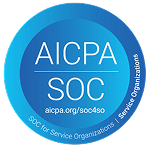FAQs
 Can Indian students refinance their student loans?
Can Indian students refinance their student loans?
Yes, some lenders offer refinancing options for Indian students, especially those with strong credit histories or steady post-graduation incomes. However, eligibility requirements vary by lender.
 What’s the difference between private and university loans?
What’s the difference between private and university loans?
Private loans are offered by banks, credit unions and other financial institutions, often requiring a cosigner or an established credit history. University loans are offered directly by some schools and may have more flexible terms but are limited in availability.
 Can scholarships and loans be combined?
Can scholarships and loans be combined?
Absolutely. In fact, combining scholarships, grants and loans is one of the best ways to fully fund your education without taking on unnecessary debt. Always aim to secure scholarships first, then use loans to cover any remaining costs.
 What happens if I can’t find a cosigner for my loan?
What happens if I can’t find a cosigner for my loan?
Many lenders now offer private student loans without a cosigner for Indian students, especially for those studying in high-demand fields. These loans evaluate your future earning potential rather than relying on a cosigner’s credit history.
